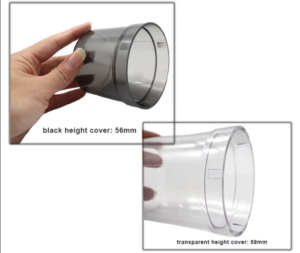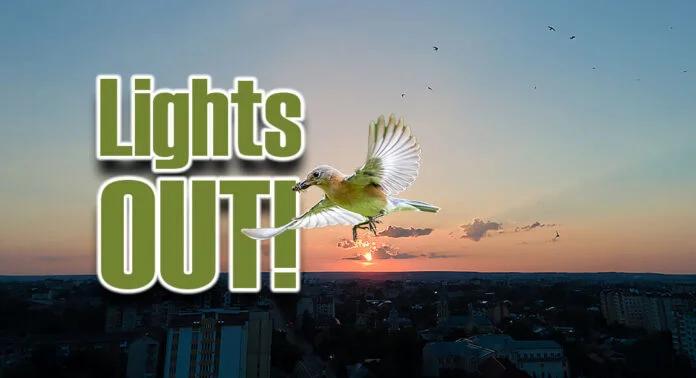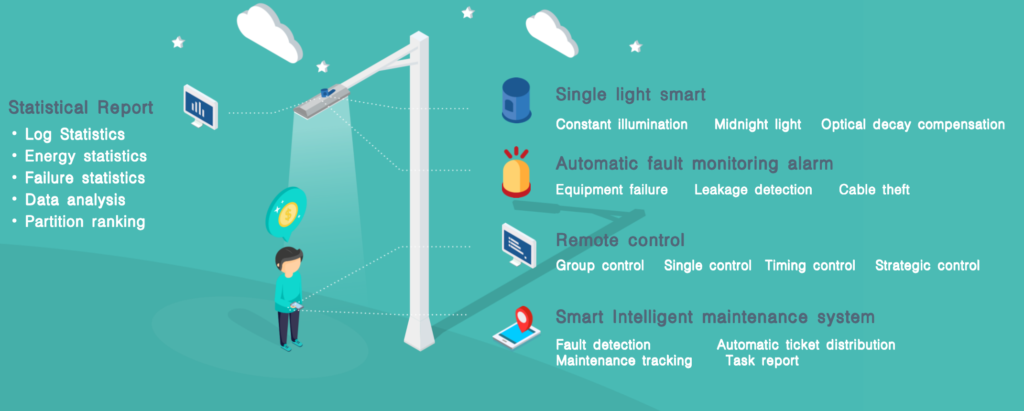Outline
- Introduction
- How Do Long Join Light Sensors Actually Work?
- How Do Black Covers Alter Light Sensor Switch Behavior?
- Which Long Join Models Best Handle Black Covers?
- What Are the Real Impacts of Using Black Covers on Outdoor Lighting?
- How Should You Implement Black Covers—and What Must You Watch Out For?
- Final Words
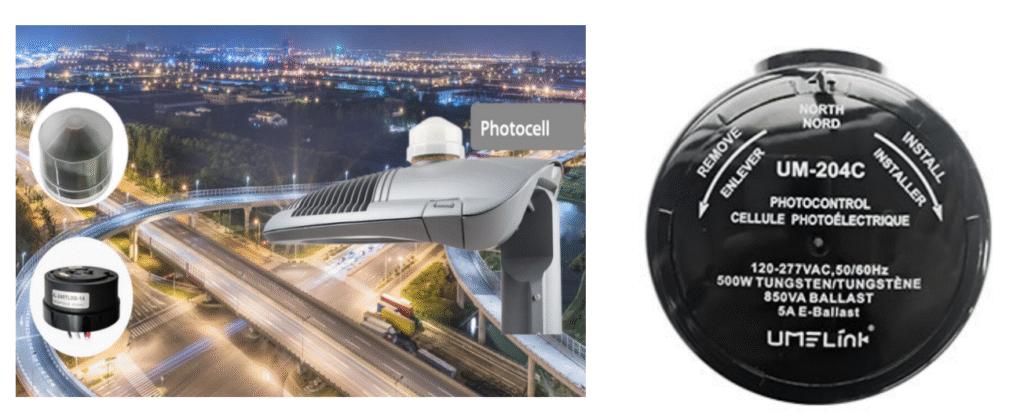
Outdoor landscape lighting is more than just illumination—it ensures safety and adds character to spaces. In the U.S., Long Join photocells have become a trusted choice for reliable automatic control.
But a new idea is gaining attention: pairing these devices with black covers. This simple tweak doesn’t disrupt normal operation but changes how the photocontroller senses light. The result? More precise timing, refined control, and lighting that better match real-world needs.
This article explores how black covers work, which Long Join models support them best, and what this means for designers and homeowners seeking smarter outdoor lighting.
How Do Long Join Light Sensors Actually Work?
Core Mechanism of Lighting Controls
Long Join photo switch sensors use light-sensitive elements such as photoresistors or photodiodes. As ambient light increases, the resistance of the photodiode drops. When darkness returns, resistance rises again. This shift in resistance is converted into a control signal. The signal then switches the load (lighting) on or off.
Inside the photocontroller, several key settings define behavior.
- Trigger thresholds: A “turn-on” and “turn-off” lux or resistance value is set. When ambient light falls below the lower threshold, the lights switch on. When light rises above the upper threshold, the lights turn off.
- Fixed delay times: Built-in delays, usually a few seconds, prevent flicker and false triggering. Passing headlights, sudden shadows, or cloud cover do not cause immediate switching.
Here is a table of typical lux thresholds and delay times for common photocell types.
| Photocontroller Type | Typical Turn-On Threshold (Lux) | Typical Turn-Off Threshold (Lux) | Built-in Delay (Seconds) |
| Mechanical bimetal | 8–15 | 30–60 | 30–90 |
| LDR-based | 10–20 | 30–60 | 5–10 |
| Electronic (Long Join JL-412 series) | 15–30 | 40–70 | 3–10 |
| Dual-sensor type | Adjustable | Adjustable | 1–5 |
Lighting Control Effects in Standard Applications
In typical use, the light photocell sensor determines when outdoor lights turn on or off. It responds directly to changes in ambient light.
Switching behavior vs. light change
As dusk sets in, ambient light drops gradually. Once it stays below the “turn-on” threshold for the delay interval, the controller activates the circuit. At dawn, when light exceeds the “turn-off” threshold for the set delay, the controller deactivates the circuit.
Response under varying conditions
- On cloudy or hazy days, light levels shift constantly. The delay feature prevents flicker.
- In urban areas with stray light from street lamps or reflections, thresholds and delays must be tuned carefully to avoid premature switching.
- During sudden light changes, such as storms or moving shadows, the controller still waits for the delay interval before acting.
How Do Black Covers Alter Light Sensor Switch Behavior?
Mechanism of Black Covers
Black covers act as optical filters over the dusk-to-dawn photocell. They reduce the amount of light reaching the photosensitive element. In effect, the sensor “sees” less light than actual ambient levels.
The result is a raised effective trigger threshold. For example:
- If the original turn-on threshold is 20 lux, adding a black cover might make the sensor behave as though the threshold is 30–40 lux (depending on cover darkness and transmission).
- The cover effectively introduces attenuation of incident light, which forces the sensor to wait for darker conditions before triggering.
The cover also molds the sensor’s response curve by flattening small fluctuations. Very minor changes in ambient light (e.g., passing headlights, small shadows) might no longer push the sensor across the threshold.
Thus, the black cover modifies the sensor’s sensitivity and shifts its trigger point without altering the internal electronics. Here is a table showcasing different light attenuation levels of different black color materials.
| Cover Material Visible | Light Transmission (%) | UV Resistance | Weather Durability |
| Matte black PVC tape | 40–60 | Moderate | Fair |
| Acrylic sheet (1 mm) | 30–50 | High | High |
| Black aluminum cap (vented) | 20–40 | Excellent | Excellent |
| Dual-layer fabric mesh | 50–70 | Low | Low |
What Lighting Changes Occur with Black Covers?
Using black covers yields two main observable effects in lighting control:
Delayed activation (later turn-on)
Because the photocontrol receptacle sees less light, the system waits for a longer period of darkness before crossing the attenuated threshold. The “on” time is pushed later compared to an uncovered sensor.
Sharper actuation behavior (higher precision)
Minor light fluctuations no longer cause toggling, because the cover dampens small amplitude changes. The system tends to respond more stably.
In practice:
- On days with gradual light changes (sunset, dusk), the added cover causes a steeper drop in sensed brightness before switching.
- Under dynamic lighting (clouds, shadows), the cover suppresses false triggers by filtering fluctuations.
- The trade-off is that in marginal lighting (twilight), the sensor may delay too much, possibly delaying needed lighting.
Which Long Join Models Best Handle Black Covers?
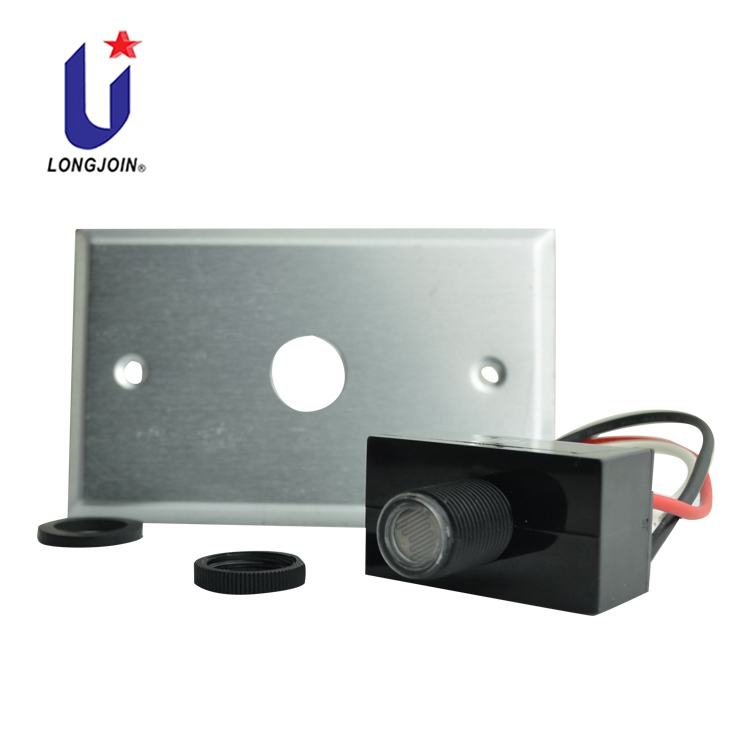
JL-103A
- Key Specs: Button type, 120 VAC, turn-on at 10–20 lux, turn-off at 30–60 lux, IP54 rating.
- How It Responds to Black Covers: Its threshold window is relatively tight. So a black cover may push its effective turn-on point higher. This will delay activation noticeably. But its simplicity makes the effect predictable.

JL-104A
- Key Specs: (Less documented publicly) Similar family series, often used in swivel mount or pencil-mount configurations.
- How It Responds to Black Covers: Its geometry may allow more uniform cover application. The effect of black covers is similar to JL-103A but depends more on how well the cover aligns with the sensor.
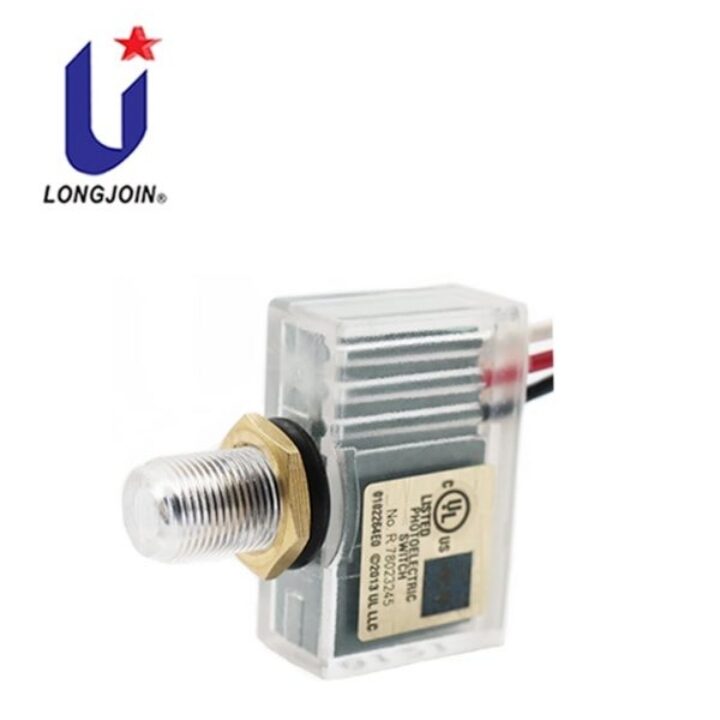
JL-412C / JL-412CR
- Key Specs: Miniature, electronic, wide voltage (120–277 VAC), 3–10 second built-in delay, IR filtering, UL773A standard, often IP65.
- How It Responds to Black Covers: Its electronic circuitry and filtering make it less sensitive to small light fluctuations. A black cover can shift sensitivity, but inherent delay and filtering reduce erratic behavior. The “CR” version has a separate sensor that helps place the cover precisely.
Feasibility & Differences
| Model | Ideal Environment | Sensitivity to Cover | Best Use Case with Black Cover |
| JL-103A | Suburban residential | High | Late-onset garden lighting |
| JL-104A | Pole-mounted / tight spaces | Medium | Pathway lighting |
| JL-412C | Variable light, urban | Low | Energy optimization + stability |
| JL-412CR | Complex layouts, remote sensor | Low | Custom fine-tuning |
What to Check When Choosing the Right Model for Black Covers
When selecting a model to pair with a black cover, consider:
● Ambient lighting environment
In areas with stray light (streetlights, reflections), choose a model with stronger filtering (e.g., JL-412C) so the black cover doesn’t overcompensate.
● Threshold margin and hysteresis width
Models with broader on/off lux ranges tolerate cover-induced shifts more gracefully. Tight threshold models risk mis-triggering under cover shift.
● Delay and filtering behavior
Electronic models with built-in delays and IR filters (like JL-412C) help suppress spurious triggers even with the cover in place.
● Physical form and sensor access
If the sensor is embedded or flush, applying a cover evenly is harder. JL-412CR’s separated sensor is advantageous: you can cover just the sensor head correctly.
● Load and voltage range
For installations using variable voltage (120–277 V), JL-412C is more flexible. Ensure the covered model still operates reliably under your supply.
● Stability under changes (temperature, aging)
Over time, sensor response may drift. A model with electronic compensation tolerates these drifts better when a cover is present.
What Are the Real Impacts of Using Black Covers on Outdoor Lighting?
Help with Lighting Time & Energy Efficiency
Black covers shift the effective light threshold upward. Lights stay off longer at dusk and turn off earlier at dawn. That reduces total operating hours.
Less time “on” means lower power consumption. Even a few minutes of delayed activation each evening adds up over seasons. Studies of photocell-based lighting show up to 40% energy savings when controls are optimally set.
Improved Lighting Quality & Ambiance
Covers change how lighting is perceived, especially under variable or subtle lighting conditions. Rather than a sudden turn-on, lighting under a covered sensor engages more smoothly as ambient light falls further. This gives a gentler twilight effect.
Trees, water features, and paths—these elements respond differently to contrast and shadows. With black covers, uplights or spotlights highlight textures more dramatically. Pathways gain clarity because artificial illumination becomes more intentional.
Enhance System Flexibility
Black covers give users more control over how lighting behaves under changing conditions.
Custom-control expansion
Using covers is a low-cost way to fine-tune existing photocontroller behavior without changing internal electronics. Users can adjust cover opacity or placement to suit different zones or preferences.
Seasonal adaptability
As days grow shorter or longer, a sensor under cover naturally delays operation, adapting lighting times to seasonal shifts. Homeowners may avoid reprogramming schedules.
Weather and unusual lighting conditions
During overcast days, snow cover, or in shaded areas, sensors with black covers are less likely to mis-trigger by stray light or reflectance. The system remains stable even when ambient light fluctuates due to weather or obstruction.
How Should You Implement Black Covers—and What Must You Watch Out For?

Selecting & Installing Black Covers
When choosing and applying black covers, precision matters. Below are some important considerations in this regard
Material choice & opacity
Use non-reflective and UV-resistant materials. So the material remains stable under temperature and weather extremes. Further, avoid plastics that yellow or warp.
Coverage degree & calibration
Don’t fully block the street light controller and leave a calibrated opening to allow controlled light. Test different cover thicknesses or layers to find the right attenuation.
Installation tips
- Mount the cover directly over the light sensor, with consistent alignment and firm fixation.
- Avoid casting extra shadows from edges or support structures onto the sensor.
- Seal edges to prevent light leaks. However, allow some ventilation to prevent condensation under the cover.
Potential issues
- Misalignment can lead to uneven attenuation. This can result in unpredictable trigger behavior.
- Over time, dust or dirt accumulation on the cover reduces transmission. This shifts the threshold.
- Material degradation (fading, cracking) can change optical properties. This will alter performance.
Optimizing Use & Maintenance
| Risk | Solution |
| Sensor fails to trigger at the needed time (lights stay off). | Use a lighter cover, reduce opacity, or temporarily remove the cover to retest. |
| False triggering due to stray light entering from the cover edges. | Re-seal edges or add a matte baffle around the sensor. |
| Cover traps moisture, fogging the sensor. | Include small vent holes. |
| Sensor drift caused by aging and temperature shifts. | Recalibrate during seasonal changes. |
Final Words
Black covers offer precise light control and better adaptability in outdoor lighting systems. Their proper selection and installation maximize both performance and visual impact. For reliable products and consistent quality, Chi-Swear provides LongJoin smart photocontrollers that integrate seamlessly with black cover applications.


